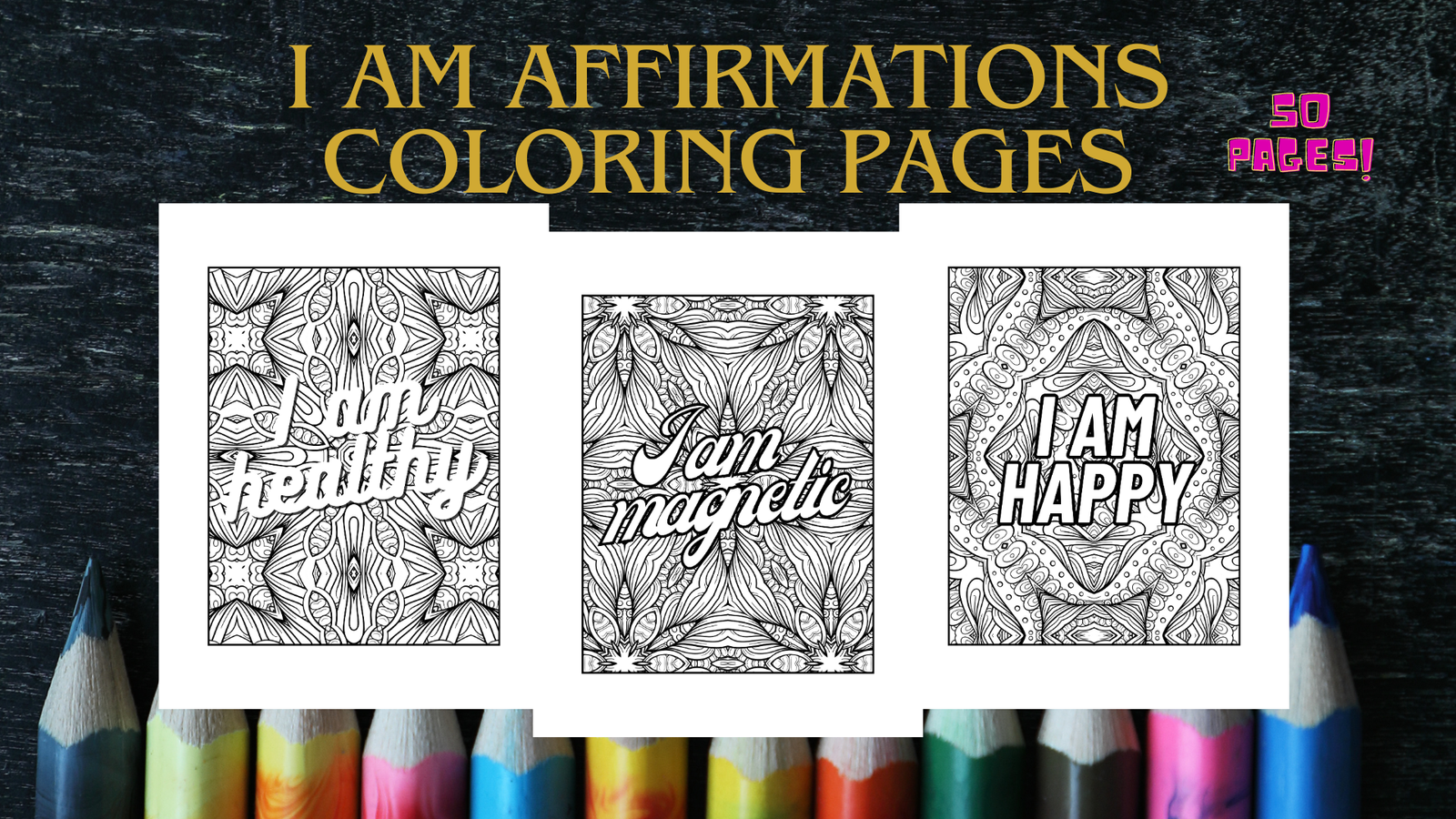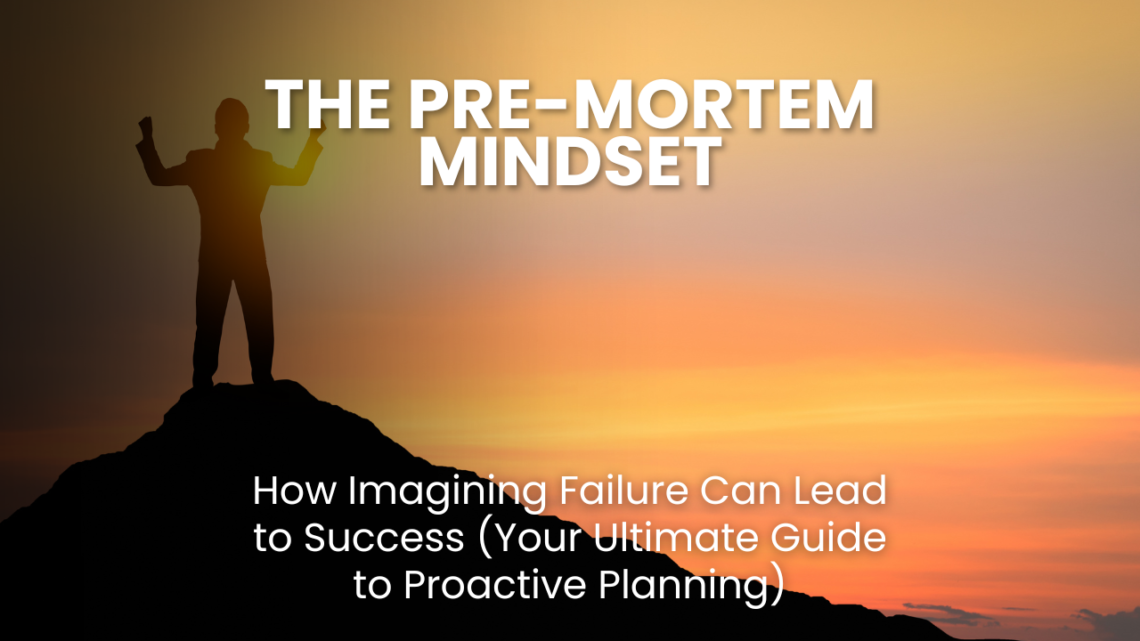In the relentless pursuit of success, our default setting often leans towards optimism. We envision triumphs, celebrate milestones before they’re reached, and focus intently on the desired outcome. While a positive outlook is undeniably powerful, a solely optimistic lens can, paradoxically, blind us to the very pitfalls that could derail our efforts. What if, instead of just imagining success, we spent time deliberately envisioning failure? What if, before embarking on a new project or significant goal, we embraced what’s known as the “Pre-Mortem” mindset?
This isn’t about fostering negativity or dwelling on impending doom. Quite the opposite. The Pre-Mortem is a powerful, proactive planning technique that harnesses the human tendency to anticipate problems, channeling it into a constructive exercise. By intentionally imagining what could go wrong – before it actually does – we unlock a unique strategic advantage, allowing us to identify potential roadblocks, mitigate risks, and, ironically, significantly boost our chances of success.
In this comprehensive guide, we will delve deep into the Pre-Mortem mindset, exploring its origins, its profound psychological underpinnings, and a step-by-step methodology for implementing it effectively in various aspects of your life – from personal goals to large-scale projects. We’ll look at how it differs from traditional risk assessment, its myriad benefits, and common pitfalls to avoid. By the end of this post, you’ll be equipped with a transformative tool that can revolutionize your approach to planning and problem-solving, turning potential setbacks into stepping stones.

Beyond Optimism: The Genesis of the Pre-Mortem
The concept of the Pre-Mortem isn’t new, but it was popularized and refined by Dr. Gary Klein, a cognitive psychologist and pioneer in the field of naturalistic decision making. Klein observed that many projects and initiatives falter not due to a lack of effort or talent, but because critical risks were simply unforeseen or underestimated. He proposed the Pre-Mortem as a thought experiment designed to counteract “groupthink” and “overconfidence bias,” two common cognitive traps that can plague planning sessions.
Traditional risk management often involves brainstorming potential problems. While valuable, this approach can sometimes be too generic or superficial. The Pre-Mortem, however, asks participants to imagine that the project has already failed – spectacularly. This shift in perspective is crucial. Instead of asking “What might go wrong?”, the Pre-Mortum asks “What did go wrong?”. This rephrasing encourages a more vivid, concrete, and often more creative exploration of potential issues. It taps into our inherent storytelling ability, allowing us to construct a narrative of failure and then work backward to identify its causes.
The Psychology Behind Its Power: Why Imagining Failure Works
To truly appreciate the Pre-Mortem, we need to understand the psychological principles that make it so effective:
- Combating Overconfidence Bias: Humans are naturally optimistic, especially about their own abilities and projects they’re invested in. This “optimism bias” can lead us to underestimate risks and overestimate our chances of success. The Pre-Mortem deliberately forces us to confront the possibility of failure, counteracting this bias.
- Enhancing Foresight and Anticipation: Our brains are remarkably adept at pattern recognition and prediction. By framing the exercise as a post-mortem, we trick our minds into operating as if the event has already occurred. This “retrospective foresight” allows us to identify causal chains and potential points of failure that might be missed in a purely prospective analysis.
- Leveraging Affective Forecasting: We tend to be poor at predicting how we will feel in the future. However, by imagining the negative emotions associated with a failed project (frustration, disappointment, wasted effort), the Pre-Mortem creates a stronger motivation to prevent those outcomes.
- Stimulating Divergent Thinking: Traditional brainstorming can sometimes lead to convergent thinking, where ideas narrow down quickly. The Pre-Mortem, by asking “Why did it fail?”, encourages a more divergent exploration of possibilities, leading to a broader range of identified risks.
- Reducing “Groupthink”: In group settings, the desire for harmony can lead individuals to suppress dissenting opinions or concerns. By explicitly stating that the project has failed, the Pre-Mortum provides psychological safety for participants to voice even uncomfortable truths without fear of being seen as negative or unsupportive. It legitimizes “pessimistic” thinking for a defined period.
- Anchoring to Specific Scenarios: Instead of generic “problems,” the Pre-Mortem encourages detailed, specific scenarios of failure. This specificity makes it easier to devise concrete preventative measures.
Pre-Mortem vs. Risk Management: Understanding the Nuances
While seemingly similar, the Pre-Mortem is distinct from traditional risk management in several key ways:
- Perspective: Risk management typically asks “What might go wrong?” (future-oriented). Pre-Mortem asks “What did go wrong?” (retrospective).
- Scope of Inquiry: Risk management often focuses on quantifiable, identifiable risks. The Pre-Mortem is broader, encouraging a more narrative and imaginative exploration of any reason for failure, even less obvious or qualitative ones.
- Emotional Engagement: The Pre-Mortem, by framing failure as an accomplished fact, often elicits a stronger emotional and intuitive response, leading to deeper insights.
- Bias Mitigation: The Pre-Mortem is specifically designed to combat cognitive biases like overconfidence and groupthink, which can undermine traditional risk assessment.
- Focus: Risk management aims to create a comprehensive list of risks and mitigation plans. The Pre-Mortem’s primary goal is to surface unforeseen or undervalued risks by shifting perspective.
Both are valuable, and indeed, a well-executed Pre-Mortem can significantly enhance the effectiveness of subsequent traditional risk management planning. It serves as an excellent precursor, populating your risk register with more insightful and nuanced potential issues.
Implementing the Pre-Mortem: A Step-by-Step Guide
The Pre-Mortem can be adapted to almost any context, from planning a major research project to launching a new business, or even organizing a personal event. Here’s a detailed guide to conducting an effective Pre-Mortem, whether individually or in a group setting:
Step 1: Define the Project/Goal Clearly
Before you can imagine its failure, you need a crystal-clear understanding of what “success” looks like.
- For a project: Define its scope, objectives, key deliverables, timeline, and success metrics.
- For a personal goal: Articulate the specific outcome you want to achieve, by when, and why it’s important.
Example: For your research, “The challenges and opportunities of Amazigh women filmmakers in Morocco and how they represent their own identity and culture in their work,” your project success might be defined as: Successfully defending your thesis, publishing an article, gaining significant new insights, or establishing strong connections within the Amazigh filmmaking community.
Step 2: Set the Stage – The “Failure Has Occurred” Announcement
This is the critical mindset shift. Gather your team (or clear your mind if working alone) and make a bold statement:
“It is [Future Date – e.g., one year from now], and we are here today because [Project/Goal Name] has been an unmitigated disaster. It has failed spectacularly. We did not achieve our objectives. We missed our deadlines. Our reputation is tarnished. Everything that could have gone wrong, did go wrong.”
Emphasize that this is a safe space for honest, unvarnished contributions. There are no bad ideas when it comes to identifying reasons for failure. Encourage a sense of genuine concern and a desire to understand what happened.
Step 3: Brainstorm Reasons for Failure (Individual First, Then Group)
Give everyone (including yourself if working alone) time to independently brainstorm as many reasons as possible for the project’s failure. This individual reflection is crucial to avoid immediate groupthink. Encourage participants to be creative, imaginative, and even slightly dramatic in their “failure narratives.”
Ask questions like:
- What unforeseen events led to this catastrophe?
- What critical assumptions proved false?
- What internal conflicts or external pressures caused the downfall?
- Which resources were insufficient or mismanaged?
- What key personnel issues emerged?
- How did our initial planning fall short?
- What unforeseen technological issues arose?
- What external factors (market shifts, political changes, natural disasters) contributed?
Example for your research project:
- Lack of access to filmmakers due to cultural sensitivities or geographical distance.
- Inability to secure funding for fieldwork or equipment.
- Unexpected political instability impacting research conditions.
- Language barriers proving more challenging than anticipated (e.g., specific Amazigh dialects).
- Filmmakers being unwilling to discuss sensitive topics or share their personal stories.
- Data collection methods proving ineffective or unreliable.
- The research question becoming irrelevant or proving too broad/narrow.
- Personal health issues or burnout leading to abandonment of the project.
- Technology failures (e.g., data loss, equipment malfunction) crippling progress.
- Academic supervisors or peer reviewers providing unconstructive feedback that derails the work.
- Finding very few active Amazigh women filmmakers, making the premise difficult to sustain.
- Misinterpretations of cultural nuances leading to inaccuracies in analysis.
- Lack of institutional support or ethical clearance becoming a major hurdle.
Step 4: Share and Consolidate
Once individual brainstorming is complete (typically 5-10 minutes), have each person share their “reasons for failure” with the group. Record every reason, without judgment or debate, on a whiteboard, flip chart, or digital document. Encourage piggybacking on ideas – if one person’s idea sparks another, add it to the list.
The goal here is quantity and diversity of thought. Avoid discussing solutions at this stage; simply list the problems.
Step 5: Prioritize and Analyze
Once all potential reasons for failure have been listed, the next step is to prioritize them. Not all failures are equal. Focus on those that are:
- Most Probable: How likely is this to occur?
- Most Impactful: If it does occur, how severe would the consequences be?
- Most Controllable/Mitigable: Is there anything we can actually do about it?
You can use a simple ranking system (e.g., 1-5 for probability and impact) or dot-voting if in a group. Discuss why certain items are deemed higher priority. This helps in understanding the underlying assumptions and vulnerabilities.
Step 6: Develop Prevention and Mitigation Strategies
This is where the “success” part comes in. For each prioritized reason for failure, brainstorm specific, actionable strategies to:
- Prevent: How can we stop this from happening in the first place?
- Mitigate: If it does happen, how can we reduce its negative impact?
- Detect: How will we know if this problem is starting to emerge?
Be concrete. Assign owners to each action item and establish deadlines. These actions should then be integrated directly into your project plan, risk register, or personal goal-setting framework.
Continuing your research example:
- Failure:Lack of access to filmmakers due to cultural sensitivities or geographical distance.
- Prevention: Secure formal letters of introduction from academic institutions or cultural organizations. Engage with community leaders early to build trust. Prioritize in-person visits to relevant regions. Learn basic phrases in local dialects.
- Mitigation: Develop contingency plans for remote interviews (e.g., secure video conferencing tools, reliable internet). Identify alternative subjects if primary contacts are unavailable.
- Detection: Regular check-ins with local contacts; monitoring response rates to initial outreach.
- Failure:Inability to secure funding for fieldwork or equipment.
- Prevention: Apply for multiple grants/scholarships well in advance. Develop a lean budget. Explore crowdfunding options.
- Mitigation: Prioritize essential fieldwork; scale back non-critical expenses. Seek in-kind donations of equipment.
- Detection: Track application deadlines; monitor funding application results.
- Failure:Finding very few active Amazigh women filmmakers, making the premise difficult to sustain.
- Prevention: Conduct extensive preliminary desk research to identify potential subjects. Network with film festivals, cultural organizations, and academic departments specializing in Moroccan cinema.
- Mitigation: Widen the scope to include women in other related media (e.g., documentary, new media, photographers) if filmmakers are scarce. Adjust the research question to focus on representations of Amazigh identity in a broader sense if necessary.
- Detection: Early stage mapping of the field; monitoring initial outreach success rates.
Step 7: Review and Integrate
Once prevention and mitigation strategies are developed, review them as a whole.
- Are they realistic?
- Are they sufficient?
- Do they create new risks?
- How do they impact the overall project plan, timeline, and budget?
Integrate these revised plans and strategies into your main project documentation. This isn’t a standalone exercise; it should directly inform and strengthen your primary plan.
Step 8: Post-Pre-Mortem Reflection
Take a moment to reflect on the process. What new insights did you gain? How has your perspective on the project changed? This reflection helps solidify the learning and makes the Pre-Mortem a continuous improvement tool.
Benefits of Embracing the Pre-Mortem Mindset
The advantages of adopting a Pre-Mortem approach are multifaceted and profound:
- Reduced Risk and Fewer Surprises: By proactively identifying and addressing potential problems, you significantly reduce the likelihood of costly and disruptive surprises down the line.
- Improved Planning and Robustness: The Pre-Mortem forces a more comprehensive and resilient plan, accounting for variables that might otherwise be overlooked.
- Enhanced Decision-Making: With a clearer understanding of potential pitfalls, you can make more informed and strategic decisions, allocating resources more effectively.
- Increased Confidence (Ironically): While it involves imagining failure, successfully identifying and planning for those failures actually builds greater confidence in the project’s ultimate success. You know you’ve considered the worst and prepared for it.
- Better Resource Allocation: By identifying where resources might be wasted or where additional resources are needed to prevent failure, you can optimize your budget and time.
- Fosters a Culture of Proactive Problem-Solving: For teams, regular Pre-Mortems encourage a mindset where identifying problems early is seen as a valuable contribution, not a sign of negativity.
- Uncovers Blind Spots: The retrospective framing (imagining failure has already occurred) helps bypass cognitive biases and uncover critical blind spots that traditional planning methods often miss.
- Boosts Team Cohesion and Communication: When done collaboratively, the Pre-Mortem can foster deeper understanding among team members about potential challenges and create a shared sense of ownership over prevention.
- Saves Time, Money, and Reputation: Addressing problems before they manifest is invariably less expensive and less damaging than reacting to them in crisis mode.
- Applicable to Diverse Contexts: From engineering projects to academic research, marketing campaigns, personal finance goals, or even navigating complex social dynamics, the Pre-Mortem’s principles are universally applicable.
Common Pitfalls to Avoid
While powerful, the Pre-Mortem isn’t foolproof. Be aware of these common pitfalls:
- Lack of Commitment: If participants don’t genuinely buy into the exercise and adopt the “failure has occurred” mindset, the exercise will be superficial.
- Shifting to Solutions Too Early: The initial brainstorming phase must be solely about identifying problems. Jumping to solutions too quickly stifles divergent thinking.
- Superficial Brainstorming: Not digging deep enough into why something failed. Encourage participants to tell a story of failure, not just list a generic problem.
- Dismissing “Minor” Issues: Sometimes, seemingly small problems can cascade into major failures. Don’t immediately dismiss ideas, no matter how unlikely they seem at first.
- Blame Game: This is not an exercise in assigning blame. It’s about systemic weaknesses and external factors. Maintain a constructive, forward-looking tone.
- No Follow-Through: The Pre-Mortem is useless if the identified risks and mitigation strategies aren’t integrated into the actual plan and acted upon.
- Infrequent Application: It’s not a one-time fix. For complex or long-term projects, conducting Pre-Mortems at key milestones can be highly beneficial.
The Pre-Mortem in Action: Broader Applications
The utility of the Pre-Mortem extends far beyond formal project management. Consider its application in these areas:
- Career Development: Before taking a new job or pursuing a promotion, imagine what could go wrong. What if the culture is a bad fit? What if the responsibilities are overwhelming? How would you navigate those failures?
- Personal Relationships: Before making a significant commitment, consider what could cause the relationship to struggle. Lack of communication? Differing values? Financial stress? How would you address these?
- Entrepreneurship/Startup Launch: Before investing significant capital and time into a new venture, conduct a rigorous Pre-Mortem. Why might this business fail in 6 months? Market saturation? Product-market misfit? Funding issues?
- Event Planning: Organizing a wedding, conference, or large party? Imagine it’s a disaster. What went wrong with the catering? The venue? The guest list? The weather?
- Academic Pursuits: Like your research project on Amazigh women filmmakers, applying the Pre-Mortem can be invaluable for thesis planning, grant applications, or major paper submissions.
Conclusion: Cultivating a Mindset of Preparedness
In a world brimming with uncertainty, relying solely on optimism is a luxury we often cannot afford. The Pre-Mortem mindset offers a powerful antidote, transforming potential weaknesses into strengths, and unforeseen obstacles into anticipated challenges. It’s not about being pessimistic; it’s about being profoundly prepared. It’s about leveraging our innate ability to foresee problems, not to dwell on them, but to disarm them before they can strike.
By taking the time to envision spectacular failure, we ironically pave a clearer, more robust path to success. So, the next time you embark on a new endeavor, large or small, pause. Close your eyes. Fast forward to the future, and imagine the worst has happened. Then, systematically work backward to understand why. The insights you gain from this simple, yet profoundly effective exercise will not only protect your efforts but also dramatically increase your chances of achieving the triumphs you so eagerly envision. Embrace the Pre-Mortem – your future successful self will thank you for it.
Enhance Your Journey with These Empowering Tools
As you embrace change and navigate life’s transitions with the help of affirmations, it’s important to equip yourself with tools that support your growth and well-being. From affirmation card decks to self-care essentials, the right products can help reinforce your positive mindset and create a nurturing environment for personal transformation.
Below are some carefully selected items that can complement your affirmation practice, making it easier to stay focused, resilient, and mindful throughout your journey :
- 30.48 cm 15-Note Steel Tongue Drum D Key Percussion Instrument Cornices Shape Handpan Drum With Drum Mallets Carry Bag And Music Book, Used For Music Education Concert Spiritual Healing Yoga Entertainment 👉 item link
- Messages of Life Inspiration Cards – 44-Card Deck with Guidebook for Positive Affirmations & Spiritual Growth, Durable Paper Material, Ideal for Ages 14 & Up – Motivational Oracle Card Game 👉 item link
- Deck of Emotions Playing Cards – 54 Card Set for Mental Health, Family Bonding, Party Fun – Christmas, Halloween, Easter, Hanukkah, Thanksgiving – Ideal Gift for Birthday, Aesthetic Home Decor – Paper Material, No Electricity Needed 👉 item link
- 1pc Self-Care English Cover Star Moon Multicolored Optional Record 5 Minutes A Day, For Learning Supplies, Notebook, Library, More Affirmations Reflections, Optimistic, Happy, Simple Undated Hardcover 👉 item link
- 3pcs Wooden Framed Canvas Poster, Modern Art, Inspirational Canvas Painting, Ideal Gift For Bedroom Living Room Corridor, Wall Art, Wall Decor, Winter Decor, Room Decoration 👉 item link









